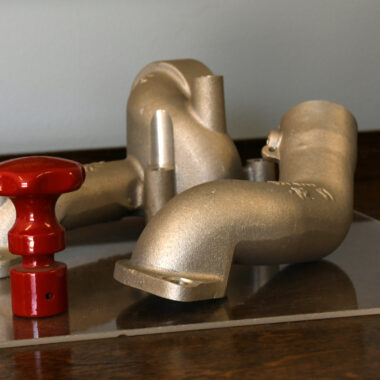Aluminum Casting Proficiency: Approaches to Elevate Your Manufacturing Refine
Aluminum Casting Proficiency: Approaches to Elevate Your Manufacturing Refine
Blog Article
Dive Into the World of Light Weight Aluminum Spreading: Understanding the Various Techniques
Aluminum spreading is an essential procedure in the manufacturing industry, with various techniques utilized to produce detailed and exact parts. Comprehending the different methods used in light weight aluminum spreading can offer useful insights right into the capacities and constraints of each technique. From the typical sand spreading method to the advanced die spreading procedure, each technique uses special benefits depending upon the demands of the task. Checking out these diverse methods can provide a comprehensive view of the possibilities within the globe of light weight aluminum spreading and just how each strategy adds to shaping the contemporary manufacturing landscape.
Sand Spreading Approach
Sand casting, a widely-used approach in light weight aluminum casting procedures, includes creating mold and mildews made of compressed sand for putting molten metal. This method is highly functional and cost-effective, making it a prominent selection for various industries. The procedure starts with the production of a pattern, typically made from wood or metal, which is after that pressed right into the sand to leave a perception. The sand mixture, typically silica sand mixed with a binder like clay, is firmly packed around the pattern to create a mold cavity. As soon as the mold prepares, it is safely positioned in a flask and molten light weight aluminum is put right into the dental caries.
After the steel has actually cooled down and strengthened, the sand mold and mildew is escaped to reveal the aluminum casting. Sand casting permits for the manufacturing of complex shapes and big components that may be expensive or hard to generate making use of other techniques. It is also a lasting strategy as the sand can be recycled and utilized numerous times, decreasing waste in the spreading procedure.
Permanent Mold Strategy

One substantial benefit of the Irreversible Mold And Mildew Strategy is the boosted dimensional precision it uses. The steel mold and mildew enables tighter resistances and better information in the final light weight aluminum spreadings compared to sand spreading approaches. This precision makes it a recommended choice for applications where limited dimensional control is important, such as in the aerospace and vehicle markets.

Die Casting Refine

Financial Investment Casting Technique
Utilizing an accuracy spreading method, Investment Casting Method involves producing elaborate light weight aluminum parts by pouring molten metal right into a ceramic mold. This process, also understood as lost-wax spreading, begins with the creation of a wax pattern of the desired part (aluminum casting).
The next step entails putting the liquified light weight aluminum right into the ceramic mold. The aluminum fills up the cavity left by the wax pattern, taking its form specifically. This approach is favored for its capacity to produce intricate shapes with high accuracy and a smooth surface area finish. Financial investment spreading is frequently utilized for making elements in sectors where elaborate styles and tight resistances are required, such as aerospace, automotive, and medical tools. The flexibility and precision of the Financial investment Casting Strategy make it a valuable strategy in the globe of aluminum spreading.
Lost Foam Spreading Approach
Having actually discovered the intricate precision of Financial investment Casting Method, the emphasis currently shifts to the innovative method of Lost Foam Spreading in light weight aluminum component production. Lost Foam Casting, also known as evaporative pattern spreading, is a modern find out method where a foam pattern of the desired component is produced and then coated with a refractory material.
Additionally, Lost Foam Casting is an affordable procedure as it reduces the demand for cores and permits for the manufacturing of lightweight parts. Regardless of its advantages, Lost Foam Spreading requires careful control of the spreading procedure to ensure and avoid problems top quality elements.
Verdict
To conclude, aluminum casting uses a selection of techniques such as sand spreading, long-term mold strategy, die casting, investment spreading, and shed foam spreading. Each approach has its own benefits and applications, making aluminum casting a functional and commonly made use of procedure in various industries. Understanding the differences in between these methods is important in selecting one of the most appropriate spreading technique for particular manufacturing requirements.
Sand casting, a widely-used approach in light weight aluminum casting procedures, entails creating mold and mildews made of compacted sand for putting molten steel. aluminum casting.The Long-term Mold And Mildew Technique, like sand spreading, is another common approach employed in aluminum casting processes, providing distinctive advantages in terms of mold and mildew reusability and dimensional precision. The steel mold and mildew allows for tighter resistances and better information in the final light weight aluminum spreadings compared to sand spreading approaches. The 2 main types of die casting are cold chamber die spreading and warm chamber pass away casting, each ideal for various types of light weight aluminum alloys.In conclusion, aluminum casting supplies a variety of use this link techniques such as sand spreading, permanent mold strategy, die casting, financial investment casting, and shed foam spreading
Report this page